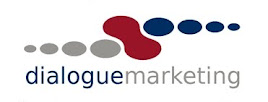Well the buzz, seemingly all over the place, is social media; and social implies a buddy buddy symbiosis, a relationship. But let's be frank here, you are running a business. It is all about marketing and profit maximisation. You don't want to get so caught up in being your customer's best mate, that you forget your marketing. Everything needs to be viewed through the marketing lens. Anything else is disingenuous, so don't pretend. I urge you to read a recent article on "What Is Relationship Marketing?" Let the gurus pontificate on about the wonders of social media, but until the business case is solid, and proven, don't panic.
Now that we've got that out of the way, let's seperate some of the wheat from the chaff.
Newsletters are becoming redundant for a number of reasons, but this doesn't mean that you shouldn't be communicating with your customers. Of course you should. But are newsletters relevant to existing customers? Perhaps in a slower repeat sales cycle business, they are, in order to keep your brand "top of the mind"; otherwise messages triggered by customer/company interactions, or the lack thereof, are much more relevant.
As an acquisition tool, I don't know. To send a newsletter is to presume a relationship. That isn't a good idea. Smaller, value added articles are more relevant; and if written correctly, they give you a reason to engage a prospect repeatedly, thereby priming them to transact with you. Remember, we recently discussed developing a communication strategy, to engage a prospect multiple times.
For the most part, newsletters are painstakingly planned, designed and delivered via email. This is usually in one of two ways, either a well designed and graphically intense html email, or as a well designed pdf document as an attachment to an email. But once they are delivered, that is it. Either the client reads or discards it. Unless you created an online archive of past newsletters, there is no way potential customers (or prospects) can view these. Also, because these communications take place outside of the internet, they aren't indexed by the major search engines, and therefore are lost. If you are one of the "enlightened" few that happen to have an online archive, unless you invest in a website content management package, you have to rely on outside help to maintain the website, a costly exercise and another hassle to think about.
The Use of Blogs
But now we have blogs, which are basically web pages where the content can be easily updated and maintained yourself. They are very easy to set up, and can be linked to your website. Today it makes sense to reduce your newsletter to a few bite sized articles, and to regularly post these to your blog. The benefits are that the content is very quickly indexed by the search engines, thus attracting interest outside of your normal mailing list. So instead of the painstaking effort to develop a regular newsletter, you simply build an archive of blog articles. This makes your emails more deliverable, as they aren't loaded with html graphics or attachments, and you simply provide a link to the relevant blog articles.
Also, newsletters tend to be blasted out to everybody on a mailing list. It is rare that businesses segment their mailing lists properly, so it is not unusual for email recipients to receive irrelevant mail at inappropriate points in the sales cycle, with potentially damaging effects. In other words, the content is not determined by the recipient. With an archive of blog articles, it is relatively easy to set up a Sequence™ of email messages, each linked to a relevant blog article. So new contacts entering your mailing list, with disparate needs, will trigger the despatch of emails with links to relevant articles, as determined by the recipient.
So the use of a blog is definitely a great idea, and superior to the use of newsletters. What is more, you can update your blog postings to facebook, LinkedIN and Twitter (and probably a hundred others), but these aren't a huge imperative just yet. A good idea would be to include an "Add This" button to your blog, allowing any visitors to share your articles via a myriad social media outlets.
Abandon Those Email Attachments
As regards attachments (newsletters or other), don't do it unless it cannot be helped. Attachments tend to be virus red flags, and often result in your message being deleted; at best you affect your email deliverability. A better option is to use a third party file hosting company, like Calameo or Scribd. Then you insert a link in your email. This way, your email recipient can safely view your email, and then elect to download the documents if necessary. By way of an example, a client of ours, in collaboration with a wine distributor, recently hosted a wine tasting event. He wanted to send out a comprehensive program as an attachment, explaining, inter alia, how to buy tickets, what was on offer and where the event would be held. We hosted the attachment elsewhere, and placed a link in the despatched email. Not only did this ensure a higher deliverability rate, but we were also able to view how many people diverted to the attachment.
So, not only is it easier to use a blog, and place links to the relevant articles, but the public nature of a blog will expand your network of interested contacts. Of course, all of this needs to work in conjunction with a well thought out communication strategy, unless the foolhardy blasting of links to your blog articles is your thing. For assistance on establishing your blog and building a customised Sequence™ of messages, that will trigger messages based on recipient determined choices, contact Dialogue Marketing.
Download a printable version here.







